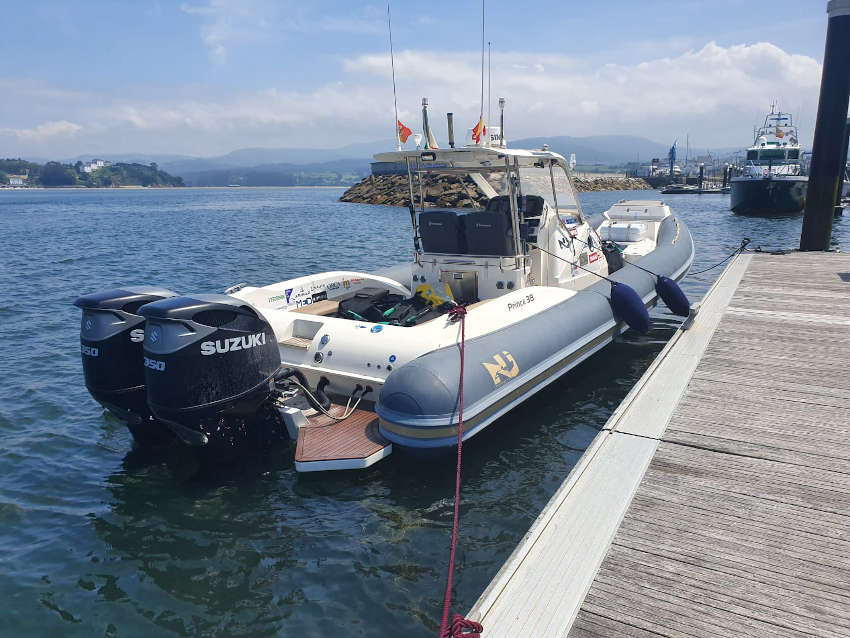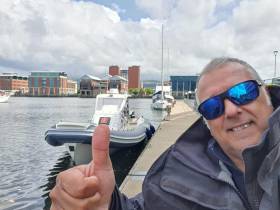Displaying items by tag: Nautilus Explorer
Since his departure from Palermo about a month ago, Sergio Davi in his Nautilus Explorer RIB has already covered more than 2,500 nautical miles of the 7,000 planned to complete his ‘Ice RIB Challenge’ from Palermo to New York.
The long-distance veteran has already crossed the Bay of Biscay and been welcomed by the Port de Camaret-sur-Mer, on the west coast south of Brest, with his Nuova Jolly Prince 38cc inflatable boat, powered by two Suzuki DF350A outboards.
More recently, his departure from Lochboisdale in the Outer Hebrides of western Scotland has completed his round of stopovers in these isles supported by Suzuki GB, which saw Davi welcomed at Newlyn Harbour in Cornwall as well as by the Royal Irish Yacht Club in Dun Laoghaire and Belfast Harbour Marina.

His stop in Dublin Bay was particularly exciting as he was greeted on arrival in Dun Laoghaire by a representative of the Italian Embassy relaying the personal greeting of Ambassador Paolo Serpi, and journalist Concetto La Malfa from italvideonewstv.net, an Italian online magazine in Ireland. While in Dublin, Davi also met Ambarish Keenan, a representative of the Peace Run movement.
Yesterday the Nautilus Explorer was making good progress to Torshavn in the Faroe Islands, where it was expected yesterday evening (Saturday 27 July). This is a key refuelling stop before the big push across the far North Atlantic to Iceland.
The crossing will be an important test both for the boat and engines and also for the equipment that the captain has brought with him.
Keep up with Davi’s Ice RIB Challenge at his website www.ciuriciurimare.com or via social media, on Facebook at Sergio Davi Adventures and Instagram @sergiodavi_adventures. In addition you can search for ‘Sergio Davi’ in the iOS Ap Store and Google Play Store for the official app to follow in real time.




























































